60-year-old (and counting)
Bias Cutting Tutorial
with one extra, albeit important, step....
{Courtesy of April 1930's.}
This bias cutting technique has actually been around for quite some time. It wouldn't surprise me if it was something Mary Brooks Picken discovered all on her own when she assisted with the writing and publication of the old Singer Sewing Book. It's a simple trick, really, and makes use of small pieces for fabric conservation!
Sometimes I have a little piece of fabric leftover from a project, but not enough to cut long strips for bias trim - and it would be tedious to sew several small strips together. Other times I want to conserve every last fiber of yardage because of the fabric rarity or cost. I have a feeling I will be using this technique often for my Liberty remnant prints!
To begin, cut a parallelogram shape from fabric with the long sides being cut on the bias and the short sides being cut on the straight of grain.
Long sides are cut on the bias and short sides are cut on the straight of grain (as indicated by the grid on the cutting mat)
Accuracy is very, very important, and can make a difference in the end result, so be sure to cut the straight-grain sides and bias sides very straight like you see in the photograph above.
Turn your fabric piece so that the bias edge is aligned to a straight line on the cutting mat grid and the straight-grain edge is aligned to the bias cutting line on the grid. This will allow you to draw parallel lines spaced evenly (following the straight lines on the grid) for perfectly straight bias strips... (see next photo for clarification)
Now you can draw your bias lines using the measurements on your cutting mat. Whether you want bias that measures 1 inch, 1.5 inches, etc.... with a fabric marking pen, you can use the straight lines on the grid as your guide to mark parallel bias-cutting lines. (see next photo for illustration)
On the back side of the fabric piece measure and mark your bias strips to your desired width. It does not matter what width you prefer, this technique is applicable for any bias width desired.
This illustration is showing 1-inch bias being evenly lined with a fabric marking pen following the 1-inch grid lines on the cutting mat.
Taking the Singer Sewing Book technique one step further, on one *straight-edge side*, make a mark 1/2-inch on either the right or the left side (it doesn't matter which) of EACH bias line.
In the photo above, I made my marks 1/2-inch to the left of each bias line.
After you make your 1/2-inch marks, transfer them to the right side of the fabric so you can easily see them when you align right sides together in the next step.
Begin matching right sides together with the two straight-edge sides. Make sure that you have one full bias width (as indicated by the pen) that will NOT get stitched... simultaneously aligning the bias lines on one straight edge side to the 1/2-inch marks you made on the other straight edge side as you will see in the next photograph.
Precisely pinning the two straight-edge sides together, align the bias lines of one straight-edge side to the 1/2-inch marks you made on the other straight-edge side. This will ensure that after stitching the two sides together, your bias lines will align straight and continuous despite the seam allowances.
When you bring the straight-edge sides together it will seem a bit awkward, but that is normal.
NOTE: You will need to have one full width of bias (which will NOT get stitched) on at least one end when you pin it together as indicated by the previous two pictures in the tutorial.
Stitch the two straight ends together using a 1/4-inch seam. Again, being precise is very important.
Notice the red stitching in the photo above? I stopped just short of the last full width of bias. There is now a full bias width that was NOT stitched as indicated in previous photo illustrations. (the extra little width on the right side is just excess and will get cut off)
When you align the bias lines on one side to the 1/2-inch marks you made on the other side, after stitching the right sides together, your bias lines should run in a continuous line - even through the seam you just stitched.
You can see here how the bias lines are now perfectly aligned running continuous through the seam - essentially forming a fabric tube.
Using a pressing ham or rolled towel, insert it into your fabric tube and press the seam allowances open.
Beginning with the side edge that has your un-stitched full-bias width, begin cutting following the bias lines you marked.
You should just keep cutting with the lines essentially forming one continuous path. Trim any excess.
My initial 8 x 18 inch fabric piece yielded 82 inches of one-inch bias!
Bias Cutting Tutorial courtesy of April 1930's.


 60-year-old (at least) Bias Cutting Tutorial - DL
60-year-old (at least) Bias Cutting Tutorial - DL

.gif)
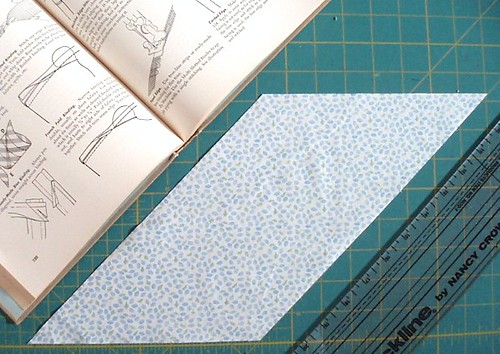
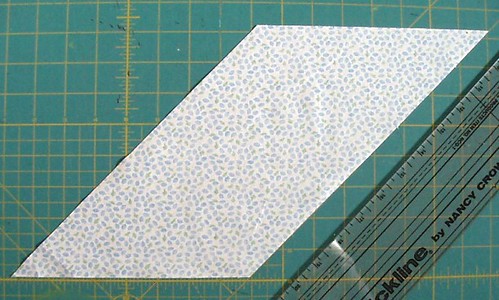
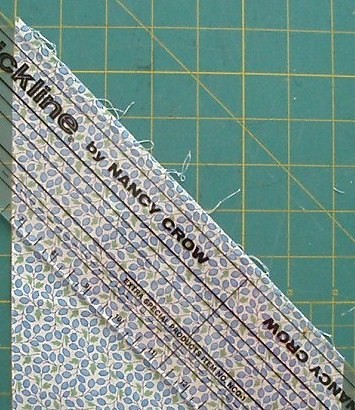
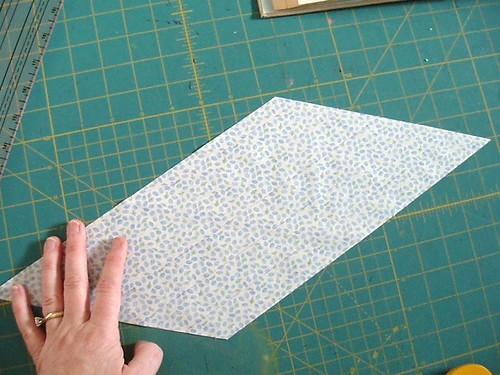

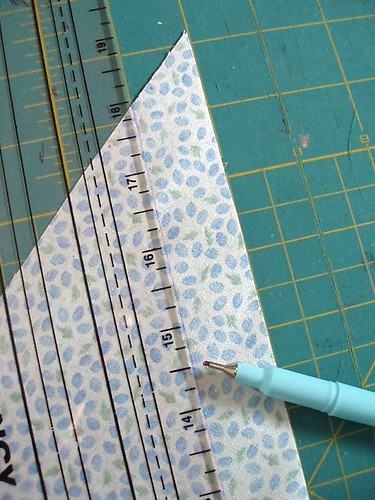
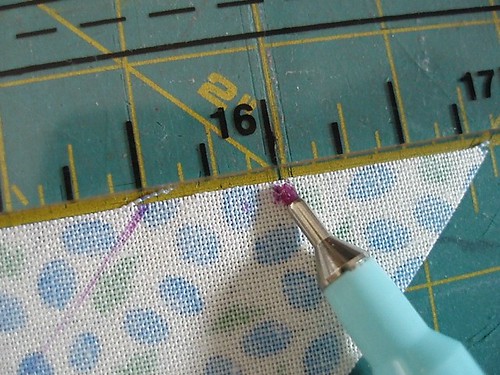
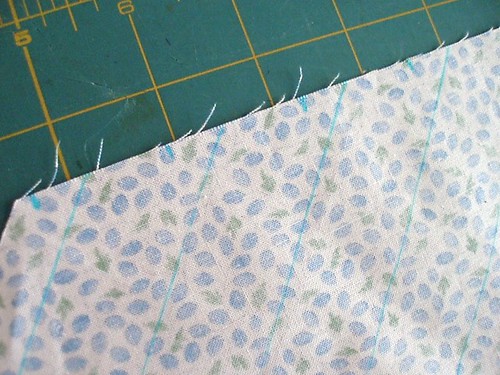
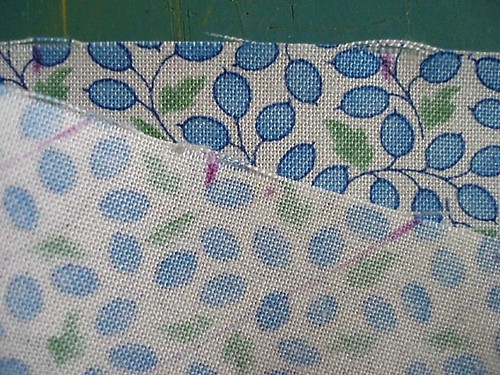

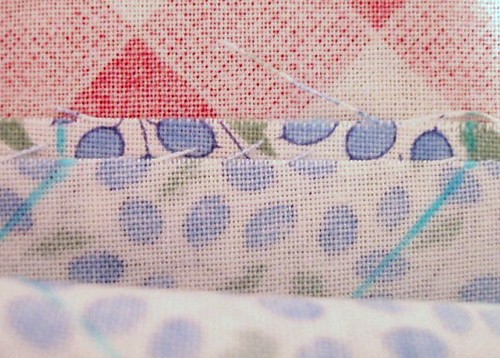
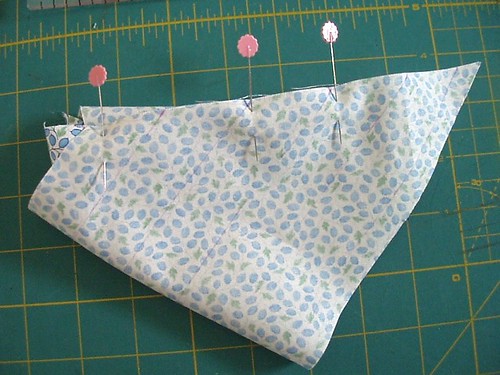

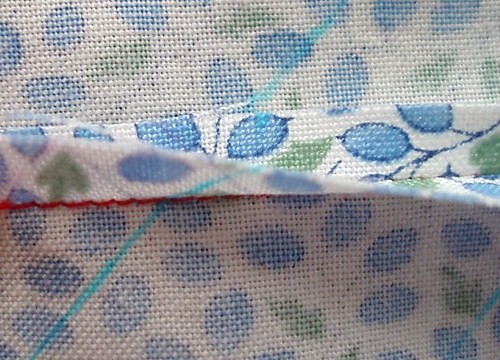
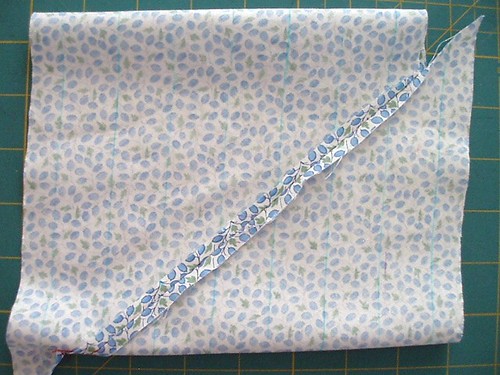
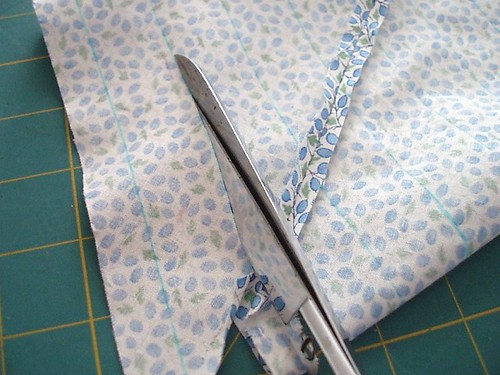


 Reply With Quote
Reply With Quote Thanks for sharing.
Thanks for sharing.

Bookmarks